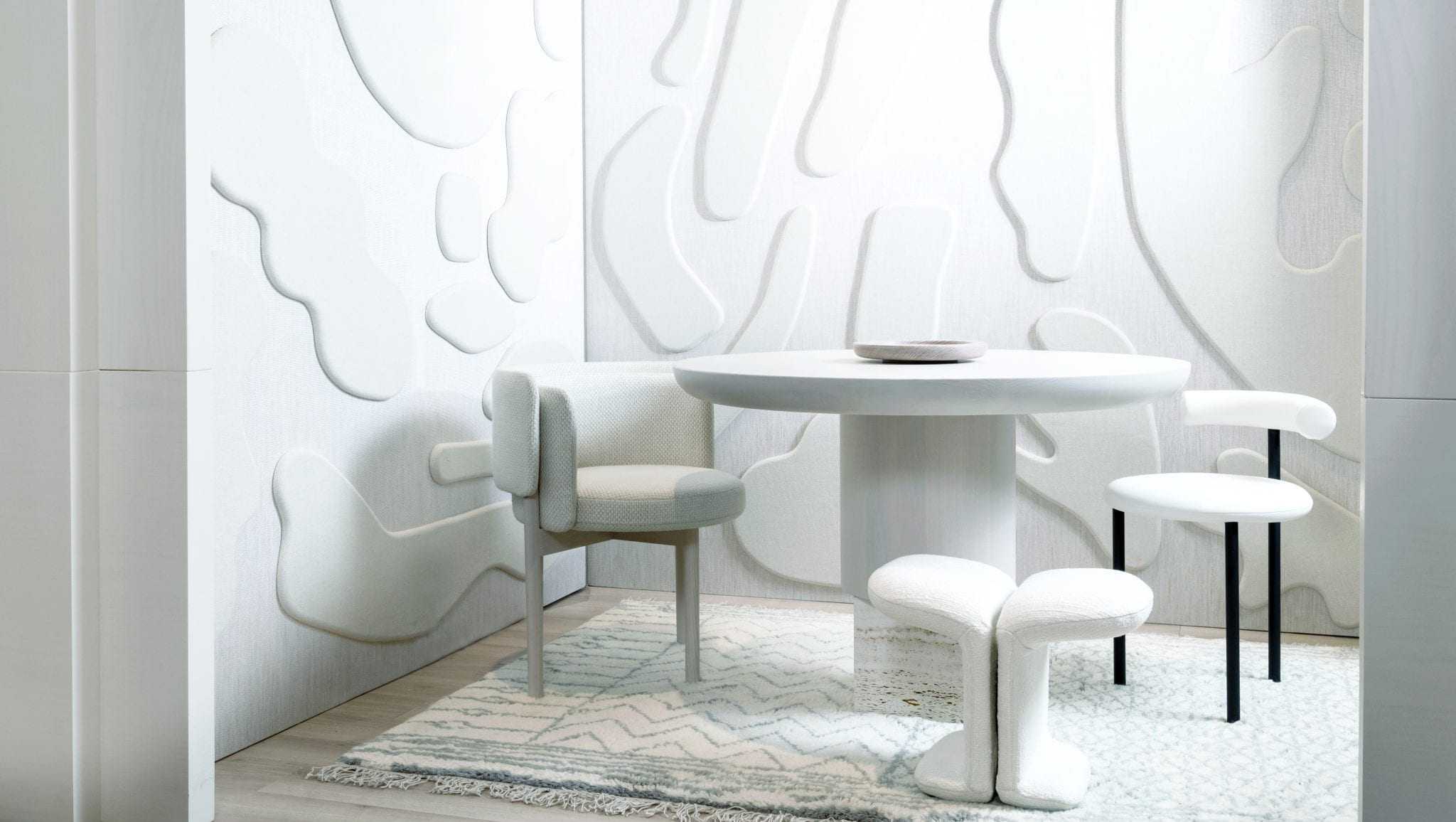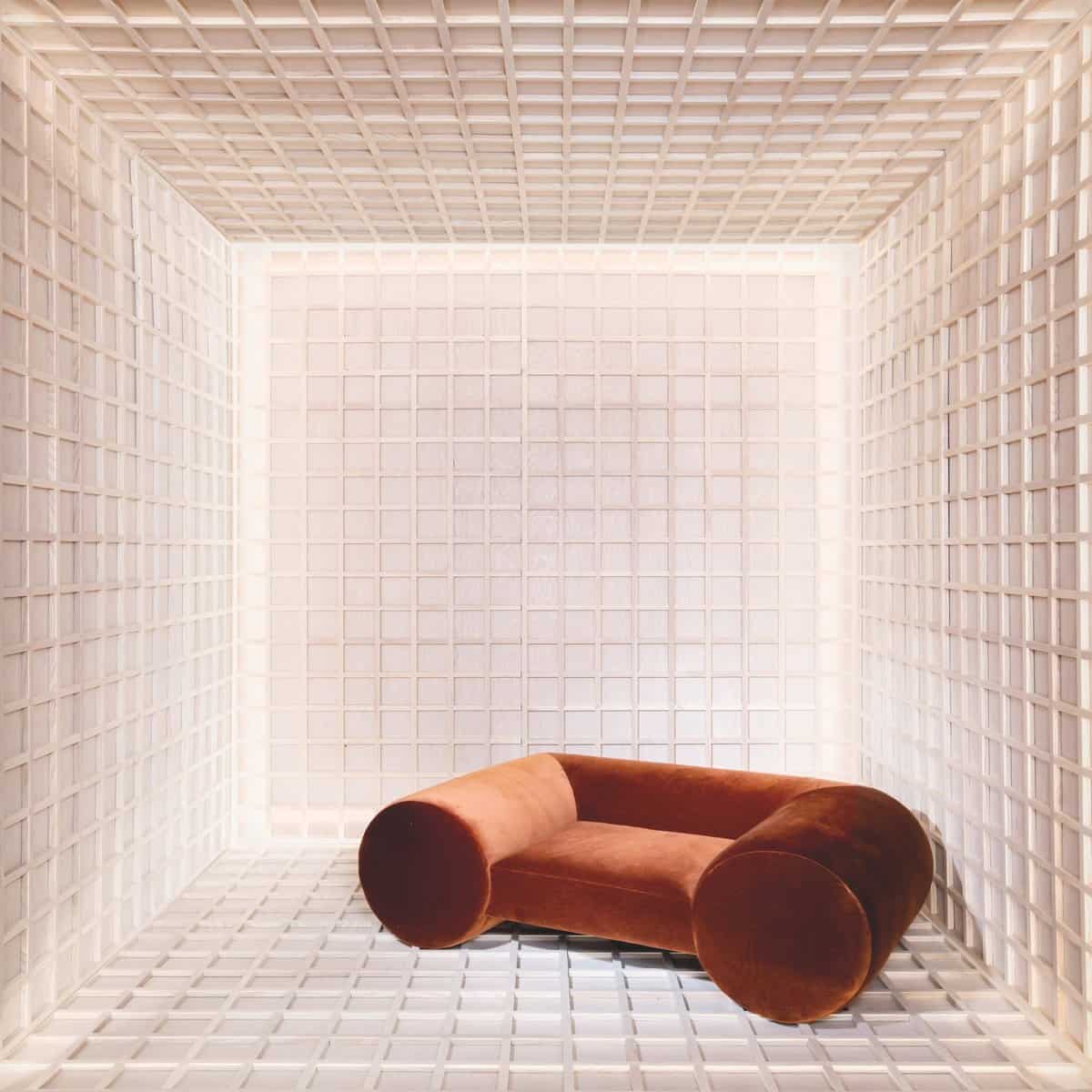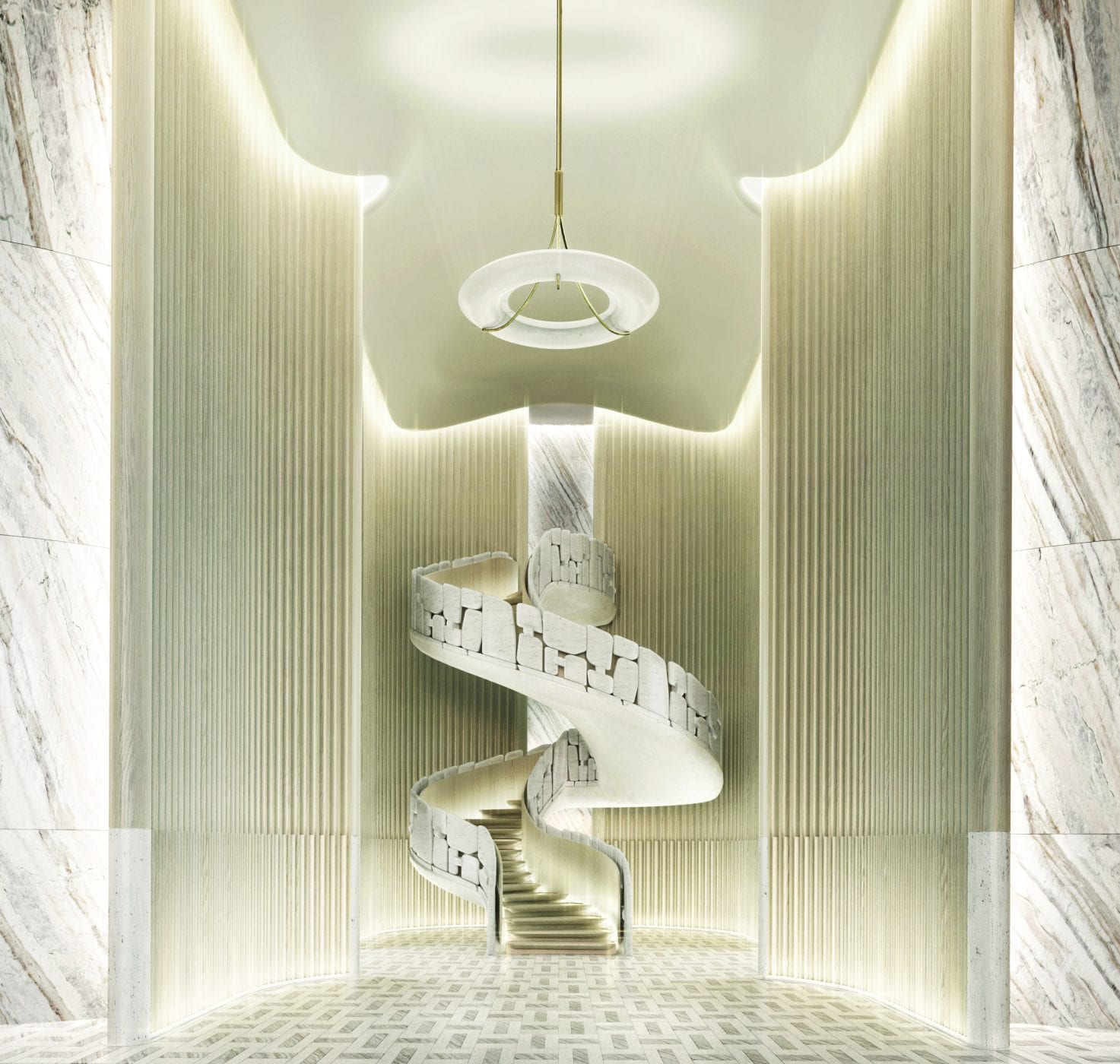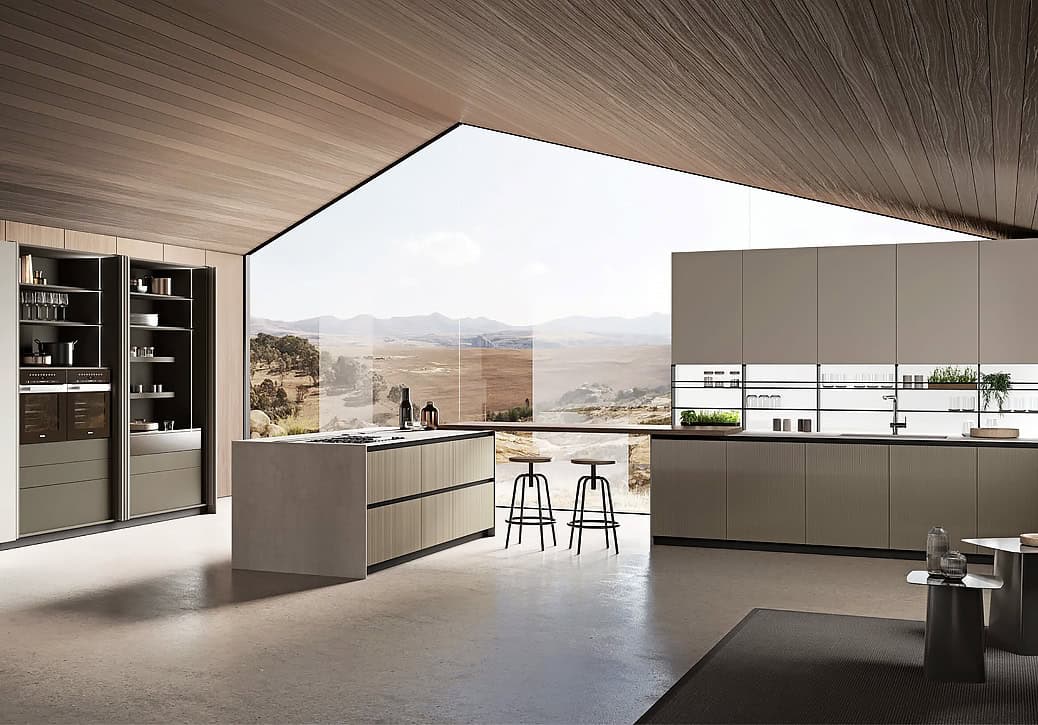The son of a cabinetmaker, Toronto-based designer Paolo Ferrari is a respected  hotel designer who we’re proud to say was a graduate of OCAD’s environmental design program. Homefront met with Ferrari at his Studio Paolo Ferrari in Liberty Village, a few days before his appearance at Toronto’s 2020 Interior Design Show.
hotel designer who we’re proud to say was a graduate of OCAD’s environmental design program. Homefront met with Ferrari at his Studio Paolo Ferrari in Liberty Village, a few days before his appearance at Toronto’s 2020 Interior Design Show.
Q: Your design studio is discreetly tucked into an old warehouse on Fraser Avenue. You’ve meticulously modernized the space and seem quite settled in. Are you still happy to call Canada your home base, despite your international travels?
A: Certainly. My family is here and I’m proud to be a designer from Canada. Even though I truly enjoy working in different countries around the globe, I’m always ready to come back home. In 2020, Studio Paolo Ferrari is planning to expand its footprint by taking over the space next door to accommodate our rapid growth. We’re quite comfortable staying in Toronto. Our roots are here.
Q: You have talked about being a Canadian on the global stage and how refreshing that is for you. Do you see yourself as a trailblazer?
A: Canadian designers and artists have traditionally been under the radar, likely because we’re often rather quiet and understated about our work. Today, I’m thrilled when I see, and hear, about Canadians in the field who are getting much better known and respected for their work, both here at home and around the world.
There is an incredible creative community in this country, with diverse and amazing talent that needs to come to the surface. I’m delighted to be part of the larger and louder conversation that is continuing to elevate Canadian design both inside our borders and beyond. This is an exciting time in all sorts of ways.
Q: How would you describe your approach to life and design?
A: I like to think of myself as quite driven. At the same time, I’m innately curious and passionate. Especially when I travel, I’m like a sponge when it comes to looking for new ideas and inspiration. I want to take everything in.
Q: Was there any pressure to pursue a more traditional career when you were growing up rather than going down, as some have referred to it, the “starving artist” route?
A: My parents were wonderfully supportive of my going to “art school” and always found it in their hearts to encourage me to do something I loved. I grew up with my father making furniture for a living. As kids, we were always surrounded by plenty of tools and pieces of wood destined to become beautiful objects. Things were being built and we had the chance to watch from design concept to completion. Looking back, perhaps it’s not a huge surprise that I chose a program that combined art and design. The combination of studying both disciplines, and the conceptual base they provided me with in my early years, forged the way I think.

Q: When you talk about your design strategy, you good energy, a sense of compassion and consideration for discuss having a focus on optimism and celebrating human experience. Can you elaborate?
A: Our work at Studio Paulo Ferrari always reflects our values and celebrates the human experience. This requires us to look through a positive lens at all of the great attributes of a project, while focusing on the potential, versus being hindered by constraints. Each aspect of what we do requires a collaborative approach that focuses on creating environments that will have longevity and contribute to the experience of the city they’re in.
For me, “optimism” is about approaching projects with both sustainability and longevity. In everything we design as a team, from interiors to furnishings and accessories, we intuitively consider our footprint and our legacy. There is no separation.
Q: Tell me about your work in the Middle East.
A: In my years with Yabu Pushelberg, I had the chance to lead projects in Dubai and Kuwait. During that time I really fell in love with that part of the world. It’s a remarkable experience working with clients that have a desire to positively impact the world around them.
Even now, I’m driven to find clients in far-away places where I don’t have a preconceived idea of what I’m going to find or be asked to create. The magic that happens when you start a dream and you have few (if any) rules is truly remarkable. For us, the design process and the journey of completely built work is as important as the final product.

Q: We heard that you and your studio team were asked to create a very unique nightclub for a Russian investor. Is that really true and are you able to tell us where it is and who it was designed for?
A: My lips are no longer sealed; Secret Room is now open, so I can tell all. We were tasked with reinterpreting the classic speakeasy deep within the lower level of the Five Palm Jumeirah in Dubai.
The club owner is from Moscow and this is the first time the Secret Room brand has been launched. And what better place than at Five Palm Jumeirah Dubai? Our intent was to create an engaging, comfortable and memorable space. We didn’t want the space to be perceived as too precious. A bar is the ultimate in escapism and we weren’t interested in simply designing an indulgent environment. We always returned to the brief of creating a space that was experimental and artistic.
Beyond the dance floor, the venue balances the duality of history and invention. It was inspired in part by Stanley Kubrick’s iconic take on futurism; think 2001: A Space Odyssey meets Anish Kapoor.
Hand-finished, carved wood detailing is contrasted with sculptural form and contemporary materiality. The bar, dynamic and fluid, was conceived as an architectural anchor to the space. The luminous metallic finish of the bar is recalled in the sculpted entry host and DJ stations. The pedestal drink tables were shaped and cast in clear resin and recall the shape of liquid. This project pushed us beyond our comfort zone and it loosened us up very early on.
Q: I hope you got to play there for a few days before you came home! Are you engaged in any new projects for some of the well-known global luxury heavyweights, as you like to call them?
A: A lot of the work underway in our studio is still confidential, but in 2019 we were all actively involved in designing a flagship hotel for a luxury brand. Along with expanding our private furniture brand, Editions, we’re also working on the Gehry Towers in Toronto and an exciting residential development in the Distillery District.

Q: Can you tell us more about Editions Paolo Ferrari, your own private collection that’s starting to take off both in Canada and abroad?
A: Editions is something I’m passionate about and I’m keen to add to. Editions is a made-in-Canada collection of about 20 pieces. It’s the indulgent part of our practice that’s motivated simply by our passion for design.
For many people who come across the brand, our insistence on local fabricating seems unusual. But, for me, quality control is essential. When we build an Editions piece, we are heavily involved throughout the process. We can only do that if our design and manufacturing are here in Toronto. Keep in mind that each piece is made to order, so having sofas and chairs manufactured by a small roster of incredibly talented fabricators fits with our studio’s high- quality ethos. Seeing each piece start off and monitoring its progress as it goes on its journey is very important to me.
It’s an honour to be part of the evolving heritage of Canadian design and approaching our practice with a global mindset is a crucial part of that. We’re Canada proud.













